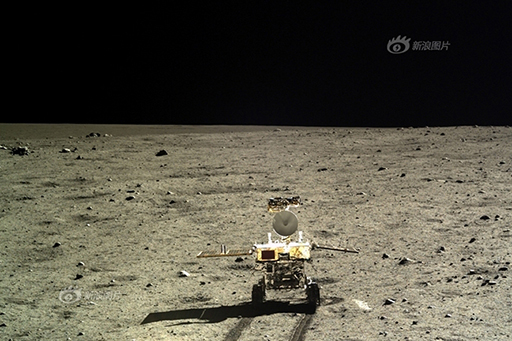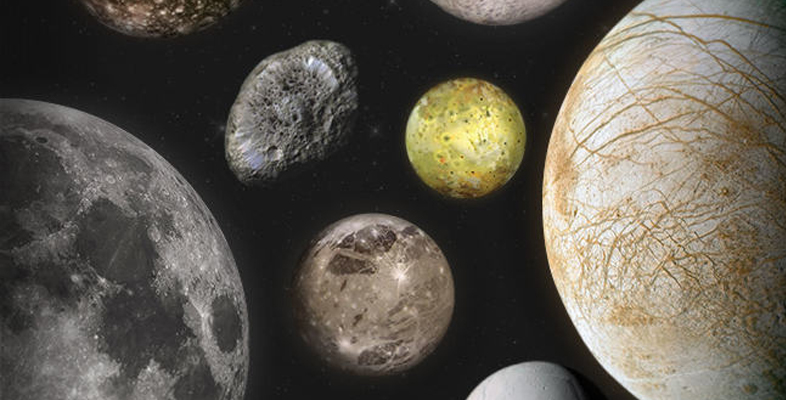1.2 The Moon goddess and the Jade Rabbit
The Chinese sent orbiters to the Moon in 2007 and 2010, and named them Chang’e 1 and Chang’e 2, after the Moon goddess of Chinese mythology. They then used Chang’e 3 to deliver a 140 kg robotic rover to the surface in December 2013, which they named Yutu (meaning ‘Jade Rabbit’, named after the Moon goddess’s pet). The lander was equipped with an astronomical telescope to observe distant objects in ultraviolet light (which cannot be done from Earth because of our atmosphere), and the rover had probes and cameras to study the lunar regolith. The Chang’e 3 mission can be seen as a test of the robotic exploration strategy discussed by Ian Crawford in the previous video, but it may also be a precursor to a future Chinese crewed landing.

The lander and Yutu were shut down during each lunar night, which lasts nearly 15 Earth-days. Yutu awoke to find itself unable to move on the third lunar day (23 Feb), but continued to function, and provided analyses suggesting a previously unsampled variety of mare basalt [Tip: hold Ctrl and click a link to open it in a new tab. (Hide tip)] . Lots of images from Chang’e 3 and Yutu can be found hereand if you go to this link you will find a remarkable interactive 360-degree panorama constructed from Chang’e 3 lander images (the Earth in the lunar sky is faked though).
The lander's astronomical instruments continued to function as well. If you want to follow the progress of the mission, try the links below. The surface package finally ceased to function in late July 2016, after nearly 1000 days of surface operations.
China’s next lunar mission, the ‘Chang’e 5 Test Mission’ was launched in October 2014 on a return trajectory to the Moon (without landing) as an engineering test for the future Chang’e 5 sample return mission which was a great success in December 2020.
Chang’e 4, a lander and rover on the Moon’s far side landed on 2 January 2019 and were still working well nearly three years later.
Chang’e 5 was the first Chinese sample-return mission. It landed on 1 Dec 2020, you can watch a video here, in a mare region suspected (on the basis of crater counting) to be relatively young. Later in that same month it returned to Earth bringing 1.7 kg of samples, including some with a radiometric age of only 2.0 billion years, validating the crater-counting technique that had suggested the landing/sampling target.
Future missions in the Chang’e series are likely to include study of, and sample return from, the Moon’s south polar region.
Next, you have a chance to weigh up some of the costs of sending objects into space. It’s a very basic non-scored quiz. Don’t worry if you don’t know some of the answers. Take an educated guess.
See also:
- Yutu update July 2014 A summary of known information into July 2014.
- Chang’e 4 announcement Plans for the first ever lunar far side landing.
- Chang’e 3 update and Chang’e 4 plans. The status of Chang’e 3 and plans for the Chang’e 4 far-side landing and the necessary relay satellite, summarised in January 2016.
- Chang’e 4 farside landing plans as of June 2016. News of plans for 2018/9 far side landing, and confirmation that Chang’e 5 sample return mission from the near side will probably precede this.
- Chang’e 5 plans An informative blog about China’s Moon plans from the Planetary Society, dated April 2017.
- Chang’e 5 ready for launch. News as China readies for the Chang’e 5 launch.
